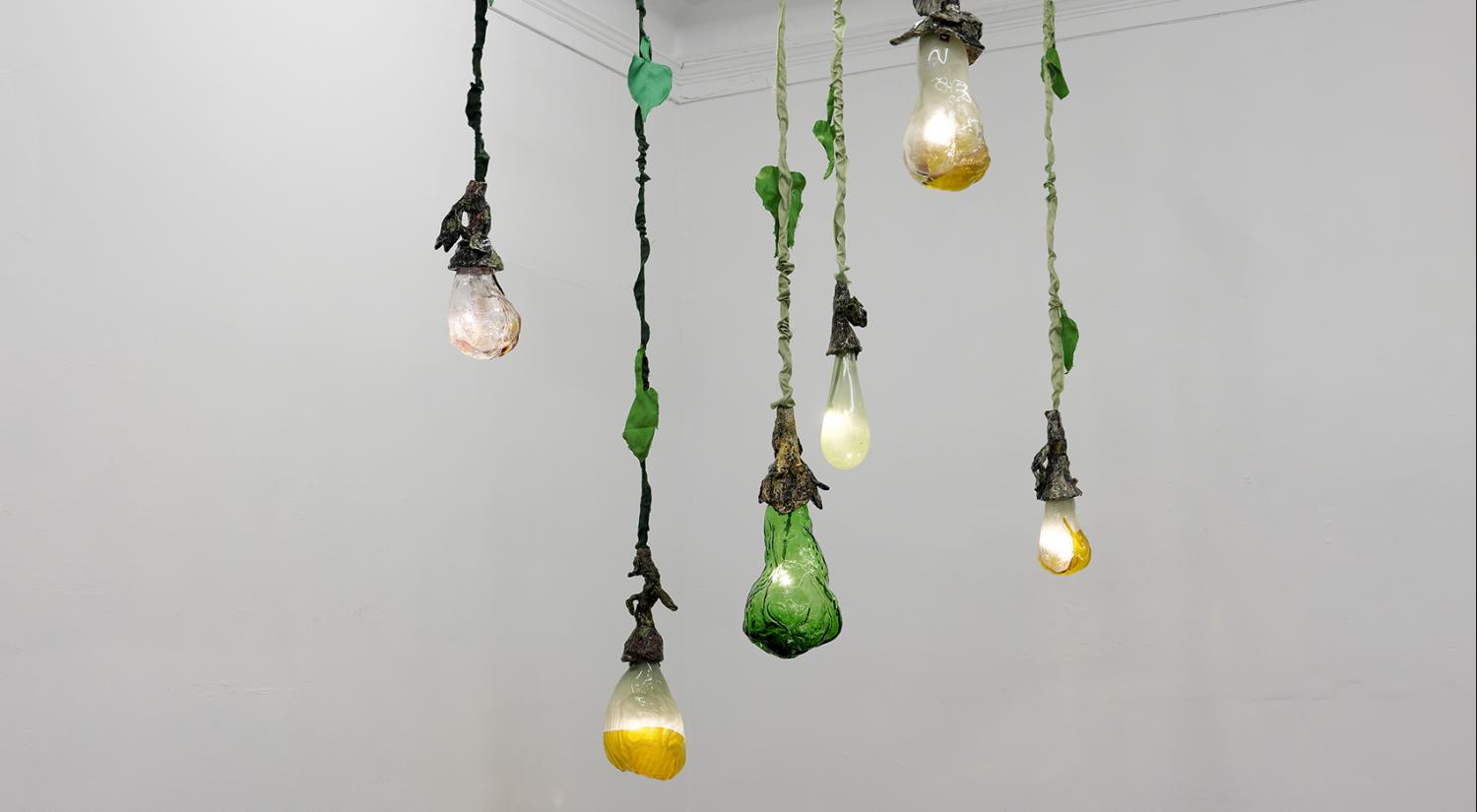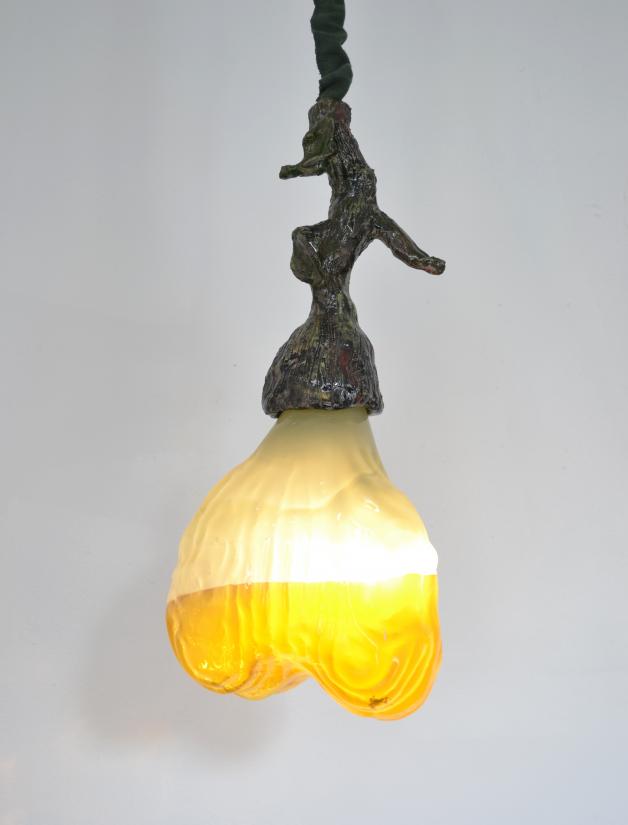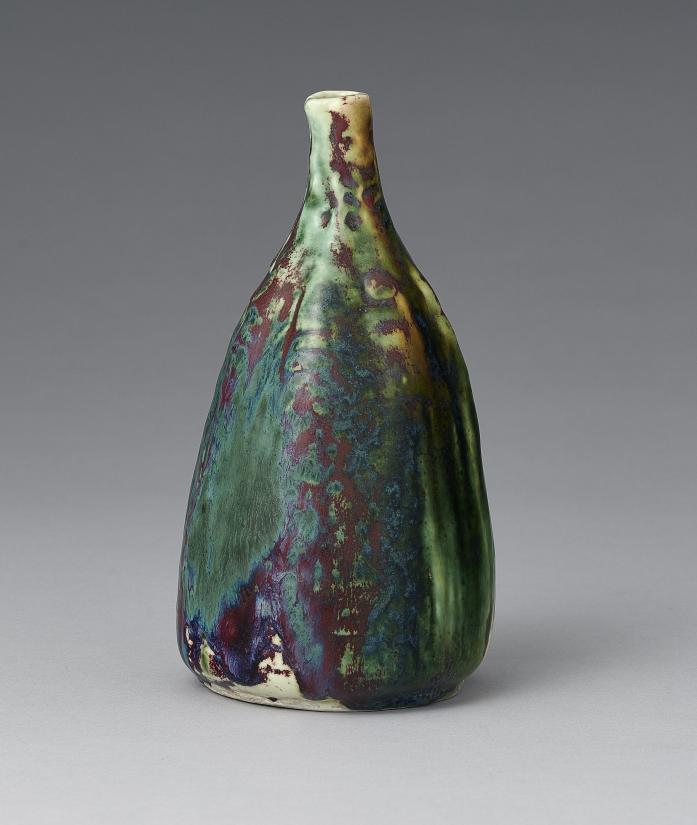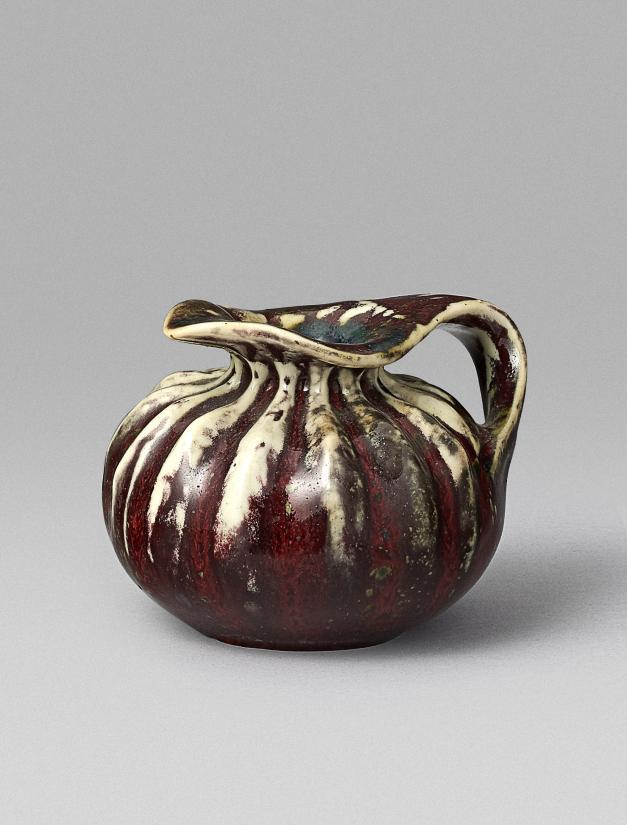A poetic and organic installation consisting of six pendant lamps by Mette Vangsgaard (b. 1968) has an assigned place in the new museum annex, which opens later this year. The museum also acquires a small pumpkin jug and a beautiful stoneware vase shaped like a calabash created around 1900 by Pierre-Adrien Dalpayrat (1844–1910), which now add new expressive voices to the museum’s existing collection of ceramics.
Danish contemporary art
Like large exotic fruits, Vangsgaard’s glass lamps hang from the ceiling, suspended from a sort of lianas. The artist plays with the materials, mixing glass and textile in an organic expression. The lamps light up in shades of green, yellow and rose-coloured, the varying surface of the glass lending the lamps a uniquely sensuous character. In her choice of materials, form and techniques, Vangsgaard enters into a dialogue with the French art nouveau tradition, which influenced all areas of design, including functional objects, such as lamps. Thus, the installation clearly relates to the museum’s collection of Danish art from around 1900.
Mette Vangsgaard (b. 1968) trained at the Royal Danish Academy of Fine Arts and works with painting, ceramics and collages in a colourful universe. She has exhibited at TRAPHOLT, Brandts, Kunsten and CLAY Museum of Ceramic Art Denmark.
French ceramics around 1900
Glazes play a key role in Dalpayrat’s small jug and vase. In the vase, the artist brings the characteristic red sang de boeuf or oxblood glaze into play in a novel way by combining it with an intense verdigris green. Dalpayrat was especially known for his innovative use of coloured glaze. The same red glaze, also known as ‘Rouge Dalpayrat’ after the artist himself, is used in the jug.
Pierre-Adrien Dalpayrat was born in Limoges, France, in 1844. He began as a faience decorator before settling in Paris in 1889 and dedicating himself to art pottery. He played a central role in the artistic development of ceramics, including stoneware, in France. Today, his works are on display at the Musée d’Orsay in Paris and the Metropolitan Museum of Art in New York, among other places.






